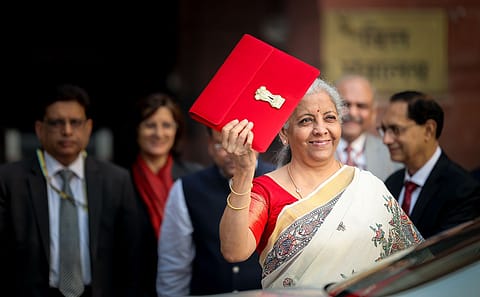Budget 2025: India reshapes duty structure
The government has increased BCD on Interactive Flat Panel Displays (IFPDs) from 10% to 20%, while reducing BCD on Open Cells and related components to 5%.

In a significant push for domestic electronics manufacturing, Finance Minister Nirmala Sitharaman announced key revisions in Basic Customs Duty (BCD) for display panels and their components in Union Budget 2025. These changes aim to correct the inverted duty structure, strengthen local production, and reduce India’s reliance on imports, aligning with the government’s ‘Make in India’ initiative.
Higher duty on IFPDs, relief for Open Cell manufacturers
The government has increased BCD on Interactive Flat Panel Displays (IFPDs) from 10% to 20%, while reducing BCD on Open Cells and related components to 5%. Additionally, to further incentivise Open Cell manufacturing for LCD and LED TVs, BCD on parts of Open Cells has been fully exempted.
The increase in BCD on IFPDs—widely used in education, corporate boardrooms, and smart offices—is expected to encourage domestic manufacturing.
A Welcome Move with Some Concerns
The changes in customs tariffs have been largely welcomed by industry leaders, who view it as a crucial step toward strengthening India’s electronics manufacturing ecosystem.
“Rationalisation of the customs tariff structure is another welcome move. The approach of aligning the inverted duty structure and increasing BCD on IFPD to 20% will be an enabler for enhancing manufacturing in India. The reduction of duty on components for manufacturing Open Cells is also in the direction of making a robust manufacturing base for LCD/LED television panels in India,” said Manish Sharma, chairman, Panasonic Life Solutions India & SA.
Recommended Stories
Prabhu Ram, VP-Industry Research Group, CyberMedia Research (CMR), emphasised how the changes support India’s electronics manufacturing vision, stating, “The government’s revision of BCD will strengthen Make in India, providing significant boost to domestic champions. This will bring us closer to Prime Minister Modi’s ambitious $500 billion electronics manufacturing target.”
Why Open Cell Manufacturing Matters
Open Cells are a crucial component of LCD and LED TVs, directly influencing screen quality, brightness, and resolution. They account for 60-70% of a TV’s total production cost. Open Cells include the liquid crystal layer and backlight, but lack external electronics like the driver board and housing, which are added during final TV assembly.
Globally, Open Cell production is dominated primarily by China, South Korea, and Taiwan, which have well-established semiconductor and display manufacturing ecosystems, including China’s BOE Technology Group, CSOT (China Star Optoelectronics Technology – a TCL subsidiary) and HKC Display.
(INR CR)
Over the past few years, India has expanded TV assembly operations, with companies like SPPL and Daiwa manufacturing for international brands as well. However, India is highly dependent on Open Cell imports, primarily from China and Taiwan. Currently, TCL CSOT India is manufacturing TV Open Cells in India, operating from its Tirupati, Andhra Pradesh plant. Some Indian players have begun small-scale Open Cell production, but large-scale domestic manufacturing is still limited.
Concerns Over Unequal Incentives
While duty exemptions on Open Cell components reduce input costs, some manufacturers argue that the policy disproportionately benefits bonded manufacturers over others.
“The recent reduction in customs duties to nil on open cells and components manufacturing, applicable only to industries with bonded manufacturing plants, creates an uneven playing field for TV manufacturers without access to such facilities. This policy is not welcomed by the broader TV manufacturing industry, and for true growth, these benefits should be extended more equitably across the sector,” said Avneet Singh Marwah, CEO, SPPL (Kodak and Blaupunkt brand licensee).
Marwah told Fortune India that SPPL has been eager to set up an Open Cell manufacturing plant in India for the last four years. However, sourcing raw materials from China’s dominant suppliers remains a key hurdle. He explained setting up a bonded Open Cell manufacturing plant requires an investment of just ₹50 crore and can be operational within three to four months.
With these new policy measures, India aims to strengthen its position as a global hub for display panel manufacturing, supporting its broader ambitions under the ‘Make in India’ and ‘Atmanirbhar Bharat’ initiatives. The real test, however, will be how quickly domestic manufacturers can ramp up production to meet demand and reduce dependence on imports.